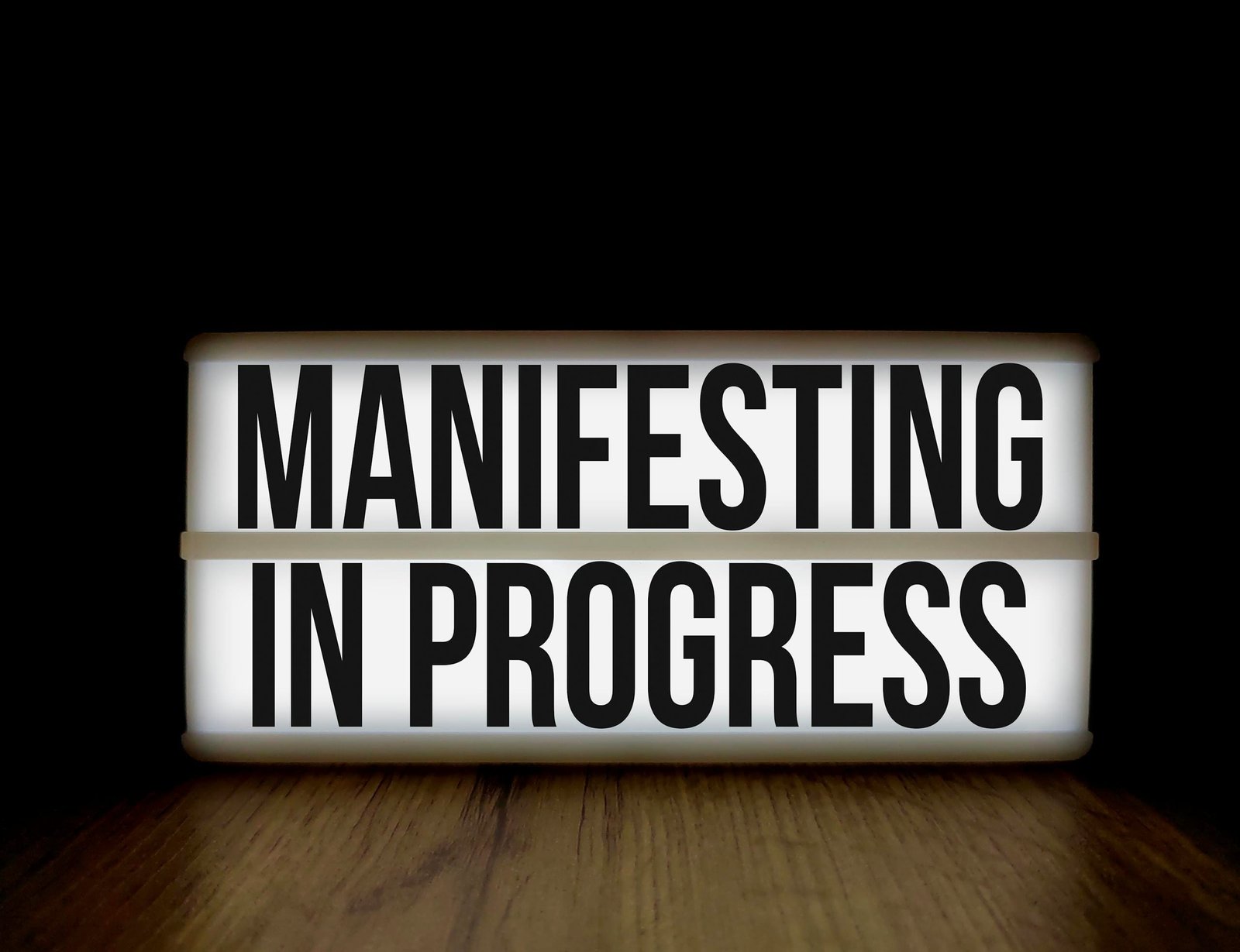Your Brain on Mindfulness: What Happens When You Practice Daily
You know those days when your brain feels like it has 37 browser tabs open, three of them frozen, and something is playing music—but you can’t figure out where it’s coming from? That’s modern life. And for most of us—especially moms, professionals, and anyone trying to hold it all together—that’s also what stress feels like.
Here’s the thing: we’re not wired to constantly operate at full tilt. Our nervous systems were built for survival, not inbox overload and endless notifications. So when we live in constant “go mode,” our brains stay stuck in fight-or-flight. We feel frazzled, forgetful, reactive—and, let’s be honest, kind of exhausted all the time.
But there’s good news. Mindfulness isn’t just about “feeling calmer.” It actually rewires your brain. As in, structurally. Like, measurable-by-scientists changes.
In this post, we’ll explore what’s happening inside your brain when you practice mindfulness consistently—even for just a few minutes a day. We’ll break down the neuroscience in plain English (no PhD required), and show you how small, doable practices can create big shifts in how you think, feel, and respond to life.

Your Brain Is Built for Change—and Mindfulness Helps It Happen
Here’s the truth: you don’t need to be calm before you start mindfulness. You don’t need the perfect routine, setting, or mood. You just need a few minutes a day, and a willingness to show up as you are.
When you do, your brain—brilliant, flexible, always evolving—starts to shift. You become less reactive, more resilient. You bounce back faster and find moments of clarity, even when life is loud.
Daily mindfulness isn’t about becoming someone else—it’s about returning to who you really are underneath the noise. And your brain? It’s on board with that.
Mindfulness 101 (Without the Fluff)
Let’s clear something up right away: mindfulness is not about becoming a blissed-out monk who never gets irritated in traffic or eats an entire sleeve of cookies while distracted.
Mindfulness is simply being aware of what’s happening—inside you and around you—without immediately judging it or trying to fix it. It’s about noticing your thoughts, feelings, and sensations as they are, instead of getting swept away by them.
It’s that moment when you pause and realize your shoulders have crept up to your ears.
Or noticing you’re halfway through lunch and haven’t tasted a single bite because you’ve been scrolling the whole time.
It’s taking one steady breath before responding to that email—the one that made your eye twitch.
And here’s the best part: you don’t have to sit cross-legged in silence for an hour to do it “right.”
Mindfulness can be practiced through:
- Breath awareness (a few slow inhales and exhales count)
- Body scans
- Mindful walking
- Journaling
- Or even washing the dishes with attention (yes, really)
It’s less about what you do, and more about how you do it—with presence, patience, and a little curiosity.
In short: mindfulness is training your brain to stop running the show on autopilot and start tuning in.
And why does that matter? Because when you practice this regularly, even for just a few minutes a day, your brain begins to shift—and not just emotionally, but physically.
Your Brain on Stress (Before Mindfulness)
Before mindfulness enters the scene, your brain under stress can feel like it’s operating in emergency mode—all the time. Even when nothing’s actually on fire.
Let’s break down what’s going on behind the scenes:
The Amygdala: Your Inner Alarm System
This little almond-shaped part of your brain is responsible for detecting threats—real or imagined. When it senses danger, it sends out the alarm: Something’s wrong! React now!
- This is helpful if you’re being chased by a bear.
- Less helpful when it’s just your toddler spilling yogurt or your inbox hitting 99+ unread emails.
When you’re constantly stressed, your amygdala becomes overactive—more reactive, more sensitive, and more likely to trigger anxiety or emotional overwhelm.
The Prefrontal Cortex: The Voice of Reason (That Gets Quiet Under Stress)
This is the part of your brain responsible for logic, decision-making, and self-regulation. Basically, it’s the part that says, Let’s pause and think before we yell or spiral.
But chronic stress suppresses prefrontal cortex activity, meaning that the more you feel overwhelmed, the harder it is to think clearly, solve problems, or keep perspective.
(So yes, there’s a very real reason why your brain feels like scrambled eggs after a rough day.)
Your Nervous System: Constantly on Edge
Stress keeps you in “fight-or-flight” mode. Your heart starts to race, breathing shifts into a shallow rhythm, and digestion takes a back seat. Suddenly, your whole system is on high alert—even if the only real “threat” is a coffee spill and yet another missed deadline.
In short: a stressed brain is a reactive brain. It jumps to conclusions, lashes out (or shuts down), and gets stuck in worry loops. But—and this is where it gets hopeful—it doesn’t have to stay that way.
What Changes When You Practice Mindfulness Daily
Here’s the good news: your brain is brilliantly adaptable. Thanks to something called neuroplasticity, it can literally rewire itself based on what you repeatedly do—or think.
So when you practice mindfulness regularly, even just a few minutes a day, you’re not just “feeling calmer.” You’re giving your brain a new blueprint. One that says:
It’s okay to pause. You’re safe. You don’t have to react to everything.
Let’s look at a few key brain shifts that happen with consistent mindfulness practice:
1. Your Amygdala Shrinks (In a Good Way)
Studies show that the amygdala actually decreases in size with regular mindfulness practice.
That means your brain starts reacting less like a car alarm going off at every leaf that falls, and more like a grounded friend who says, “Let’s not panic. Let’s take a breath.”
2. Your Prefrontal Cortex Gets Stronger
This is the CEO of your brain—the part responsible for focus, reasoning, and self-control.
With daily mindfulness, activity and even gray matter density increase in this area, meaning:
- You make decisions more calmly
- You regulate emotions more easily
- You respond instead of react (most of the time)
Basically, your inner grown-up voice gets louder—in the best way.
3. More Gray Matter = More Emotional Intelligence
Mindfulness has been linked to increased gray matter in areas of the brain tied to empathy, self-awareness, and compassion.
Translation? You don’t just get better at noticing your own emotions—you become more tuned in to others, too. (Which helps a lot when your kid is melting down or your coworker’s being… less than mindful.)
4. A Happier, Healthier Hippocampus
Your hippocampus helps regulate emotions and memory—and it actually gets thicker with consistent mindfulness. That means you’re not only better at remembering where you left your keys, but you’re also better at bouncing back emotionally when life hits hard.
Bonus: Less Cortisol, Better Sleep, More Calm
Yes, the physical benefits are real too:
- Reduced cortisol (your stress hormone)
- Lower blood pressure
- Improved sleep
- Greater overall sense of well-being
All from sitting with your breath? Yep. Science is kind of obsessed with mindfulness right now—and for good reason.
How Long It Takes (Spoiler: Not as Long as You Think)
One of the most encouraging things about mindfulness is that the benefits aren’t locked behind some impossible paywall of discipline and devotion. You don’t need to meditate in a cave for 10 years or become a certified guru to see real, measurable changes in your brain.
In fact, research shows that noticeable structural changes in the brain can begin after just 6 to 8 weeks of consistent practice. Let that sink in.
What does “consistent” mean? You don’t have to meditate for an hour a day. You don’t even have to sit still, honestly.
Most studies showing brain change involve:
- 10–20 minutes per day
- 5–6 days per week
- Practices like breath awareness, body scans, mindful walking, or guided meditations
If that still sounds like a lot, start smaller. Even 3–5 minutes a day can begin to shift your stress response and improve awareness. Think of mindfulness like a muscle—it builds with repetition, not intensity.
When do people feel a difference? Many people report feeling:
- A little more centered
- A little less reactive
- A bit more aware of their thoughts (instead of being hijacked by them)
…within a few days to a week.
The brain science may take a bit longer, but your experience will likely shift sooner—subtle but powerful.
So no, you don’t need to overhaul your life. You just need to start—small, messy, human, and consistent.
Real-Life Wins (How It Actually Feels Over Time)
Let’s be honest: mindfulness probably isn’t going to turn you into an always-peaceful, fully enlightened human who never gets flustered when someone leaves the milk out.
But it will start to feel like this:
You pause before reacting.
That moment when someone cuts you off in traffic or your child throws a tantrum… and you don’t snap instantly.
You notice the irritation rise—and you breathe instead of boil over.
That’s your mindfulness practice kicking in.
You recover faster from stress.
Bad day? Sharp email? Old worry loop trying to make a comeback?
You still feel it—but it doesn’t derail you.
There’s space between the trigger and your response, and in that space, there’s power.
You’re more present (in the middle of the chaos).
Maybe it’s finally tasting your coffee, instead of inhaling it on autopilot.
Or catching your child’s laugh—and actually pausing to enjoy it.
You feel your breath while washing dishes and think, “This isn’t so bad.”
The ordinary becomes… enough.
You notice your thoughts instead of becoming them.
That anxious spiral? That self-critical voice?
You start to say, “Oh hey, there’s that thought again,” instead of believing it’s the absolute truth.
This is mindfulness quietly building your emotional resilience.
You offer yourself more compassion.
Instead of beating yourself up for feeling overwhelmed or distracted, you start to meet yourself with grace.
It’s not always graceful—but it is growth.
Mindfulness doesn’t remove stress from your life.
It just helps you meet life with a steadier heart and a kinder mind.
Final Thoughts
If you’re ready to make mindfulness part of your daily rhythm—and want gentle support along the way—sign up for The Heart of Mindful Living newsletter. You’ll get soulful reminders, simple practices, and encouragement delivered with love (and zero judgment).
FAQs: Your Brain on Mindfulness
Q: Do I really need to practice every day?
A: Daily is ideal, but not mandatory. Aim for consistency, not perfection. A few minutes most days is better than waiting for the “perfect” day that never comes.
Q: How do I build a habit that actually sticks?
A: Start small. Tie your mindfulness to something you already do—like sitting down with your morning tea, or closing your laptop at the end of the day. Keep it simple and repeatable.
Q: What if I can’t clear my mind?
A: You don’t need to. The goal isn’t to stop thinking—it’s to notice when your mind wanders, and gently bring it back. That’s the practice.
Q: Can things like journaling or mindful walking count?
A: Absolutely. Mindfulness isn’t limited to meditation. Anything that invites your full, nonjudgmental presence—yes, even mindful dishwashing—counts.
Q: I used to be consistent but fell off. Does that mean I have to start over?
A: Nope. Mindfulness always welcomes you back. There’s no streak to protect. Just begin again, wherever you are.
Jennifer M. is the Executive Director of a nonprofit organization, where she combines her leadership expertise with a deep commitment to mindful living and community well-being. Mindfulness, meditation, and intentional living are not just practices for her, they are core principles that guide her as a certified Transformation Life Coach and Meditation Practitioner. As co-host of the Heart of Mindful Living podcast and co-manager of the Heart of Mindful Living website, Jennifer shares insights on mindfulness, self-discovery, and building a more peaceful world. A lover of nature, animals, and plants, she thrives on personal growth and cultivating meaningful connections. When she’s not working, Jennifer can be found spending quality time with her family, immersed in a great book, painting, or enjoying music—particularly from the ’70s, as she’s yet to encounter a classic tune she doesn’t adore.





